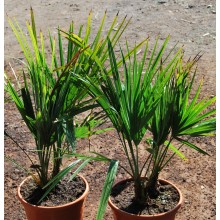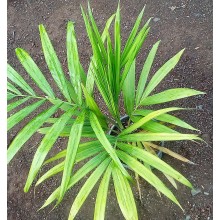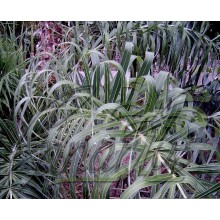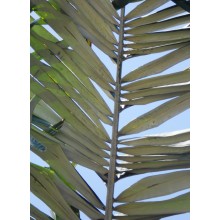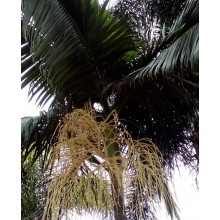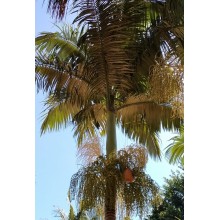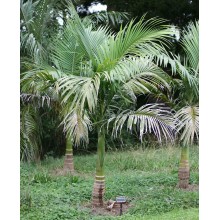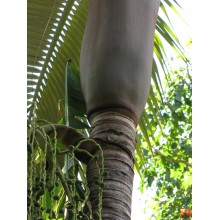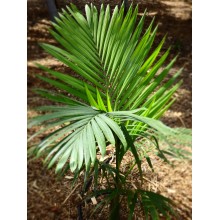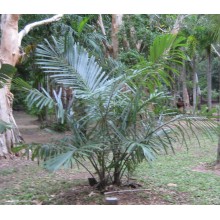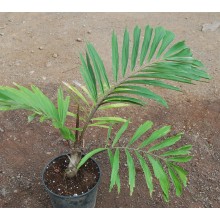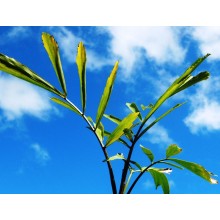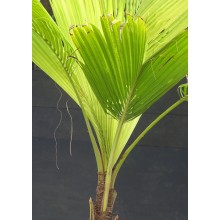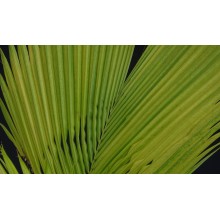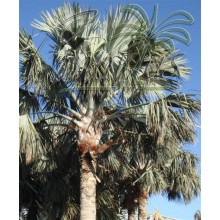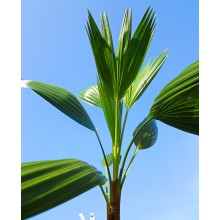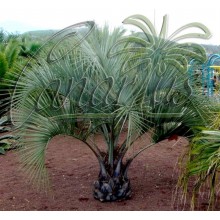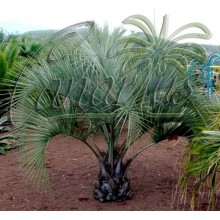Palmiers Il y a 101 produits.

La famille des palmiers, Arecaceae ou Palmae, comprend environ 2. 400 espèces indigènes aux climats chauds du monde, allant des espèces tropicales délicates aux palmiers résistant au froid. Quelques palmiers peuvent être plantés à l'extérieur en Europe centrale et tiennent bien au gel, bien en dessous de -10 ° C (14 F). Ceux qui vivent dans les pays méditerranéens peuvent se développer un plus grand nombre d'espèces à l'extérieur. Certains producteurs des zones côtières d'Europe du Sud élèvent maintenant des collections de palmiers en plein air avec plus de 100 espèces.
Canarius ne va expédier que des palmiers robustes, cultivés dans des petits pots pour réduire les coûts d'expédition et les problèmes de manutention. Il vous faut donc les transplanter dans des pots plus grands peu de temps après avoir reçu le paquet. Soyez prêt à leur donner le meilleur. Certains palmiers peuvent supporter la neige, certains peuvent vivre à l'intérieur ou dans des pots, et certains sont très tropicaux. Il suffit de choisir celui qui peut prospérer dans vos conditions.
Qu'est-ce que les palmiers peuvent se développer dans votre région? Lisez notre Liste des palmiers résistants au froid pour l'Europe. Visitez Canarius Blog pour en savoir plus sur nos palmiers. Vous verrez les photos des pépinières: des palmiers de différents types de Nouvelle-Zélande, des Bottle Palms avec une qualité supérieure de racine.
-
Acoelorraphe wrightii
Acoelorraphe wrightii
This clumping palm is typically found in marshlands, with thin trunks up to 7 m tall. It is a symbol of the Everglades in Florida. Acoelorraphe tolerates brackish water and often grows with mangroves.
72,00 € -
Adonidia merrillii LARGE
Adonidia merrillii LARGE
This mid sized palm is popular in tropical gardens throughout the world.
49,30 € -
Allagoptera arenaria
Allagoptera arenaria
h= 20-40 cm - Cont. 16 cm. Low trunkless feather palm from the coastal dunes of Brasil, with elegant ruffled leaves coming out of the ground. Flowers are borne on unbranched spikes.Allagoptera needs drained sandy soil, enjoys coastal locations and can take light freezes. It can grow outdoors in coastal Mediterranean gardens.
27,60 € -
Allagoptera caudescens
Allagoptera caudescens
Elegant palm from Brazil. Leaves, are pinnate, with "clustered segments", silvery white underneath. It is slow but the beauty of the leaves starts soon! Flowers and fruits are produced on a large hanging spikes. It has some tolerance to cold, it takes short light frosts and can be tried outdoors in the coastal Mediterranean. It was formerly named...
31,40 € -
Archontophoenix maxima
Archontophoenix maxima
Very elegant palm from Australia, with slender ringet trunk, topped by a showy bright green crownshaft.
32,50 € -
Archontophoenix myolaensis
Archontophoenix myolaensis
This species of Archontophoenix is native to a small area in the mountainous region west of Cairns in N.W. Queensland, found in a few locations in gallery forests following rivers. It is similar to the more common Archontophoenix cunninghamiana, with a slightly smaller size, a bluer crownshaft and some other minor differences.
42,00 € -
Archontophoenix purpurea
Archontophoenix purpurea
The showy, colourful crownshaft is the masterpiece of this elegant solitary palm from australia. A rainbow of purple, green and blue.
52,00 € -
Archontophoenix tuckeri
Archontophoenix tuckeri
Uncommon Archontophoenix species from Northern Australia. Leaves are silver underneath, somewhat pendulous or drooping. It is suited to coastal Mediterranean condition and it takes cool weather and short, light frosts.
28,60 € -
Areca catechu
Areca catechu
Areca catechu is a species of palm native to the Philippines cultivated for areca nuts. Medium-sized palm tree, growing straight to 20 m tall, with a trunk 10–15 cm in diameter. The leaves are 1.5–2 m long, pinnate, with numerous, crowded leaflets.
29,40 € -
Arenga australasica
Arenga australasica
Clumping feather palm from NE Australia, found mainly in coastal areas. Despite its tropical origin, it grows in colder climates.
72,00 € -
Arenga engleri
Arenga engleri
Clumping frost-hardy palm with attractive pinnate leaves that are dark green above, and silver below. This tropical-looking palm is native to the open forests of Taiwan and the Ryukyu Islands.
51,00 € -
Arenga pinnata
Arenga pinnata
Arenga pinnata is an economically significant feather palm native to tropical Asia, ranging from eastern India to Malaysia, Indonesia, and the Philippines in the east.
48,30 € -
Arenga ryukyuensis
Arenga ryukyuensis
This new palm was described in from southern Ryukyu Islands of Japan. It is similar to the beautiful Arenga engleri from Taiwan but it is probably more cold-tolerant. It is also smaller, with shorter and thicker stems, to 2m and 20cm diameter, and leaves to just 2m long. Slow, but frost-resistant, to about -7 C!
36,60 € -
Beccariophoenix fenestralis
Beccariophoenix fenestralis
Beccariophoenix fenestralis is a spectacular, massive and rare Coconut relative from Magagascar.It is an imposing palm tree that is is cultivable in tropical and humid subtropical climate regions, in full sun and on rich soils, preferably sandy, acidic or neutral, where it grows quickly and vigorously.We offer a 60 cm high plant.
92,00 € -
Beccariophoenix fenestralis Large
Beccariophoenix fenestralis Large
Beccariophoenix fenestralis is a spectacular, massive and rare Coconut relative from Magagascar.It is an imposing palm tree that is is cultivable in tropical and humid subtropical climate regions, in full sun and on rich soils, preferably sandy, acidic or neutral, where it grows quickly and vigorously.We offer a 100 cm high plant.
132,00 € -
Bismarckia nobilis
Bismarckia nobilis
Majestic, "noble", silvery-blue palm native to the savannas of Madagascar. Fast growing large robust palm with fan-shaped leaves.
43,50 € -
Brahea edulis
Brahea edulis
This palm is native to the mountains of the small island of Guadalupe, off of the Western coast of Mexico. It is really endangered in habitat but it thrives in cultivation under a wide range of conditions. A perfect species for the Mediterranean.
26,00 € -
Butia odorata - Jelly Palm
Butia odorata - Jelly Palm
Feather palm with sweet, tasty, scented fruits. It is native to Brazil, Uruguay and Argentina and it is the only frost-hardy species of palm that can produce abundant, delicious and useful fruits in colder climates. Leaves are blue-silvery, elegantly arching. Mature specimens show no damage at -10 C and some have survived to -20 C !
43,50 € -
Butia odorata - Jelly Palm - Large
Butia odorata - Jelly Palm - Large
Feather palm with sweet, tasty, scented fruits. It is native to Brazil, Uruguay and Argentina and it is the only frost-hardy species of palm that can produce abundant, delicious and useful fruits in colder climates. Leaves are blue-silvery, elegantly arching. Mature specimens show no damage at -10 C and some have survived to -20 C !
159,00 €
Pour le moment, il ya peu de produits dans cette catégorie Palmiers
















